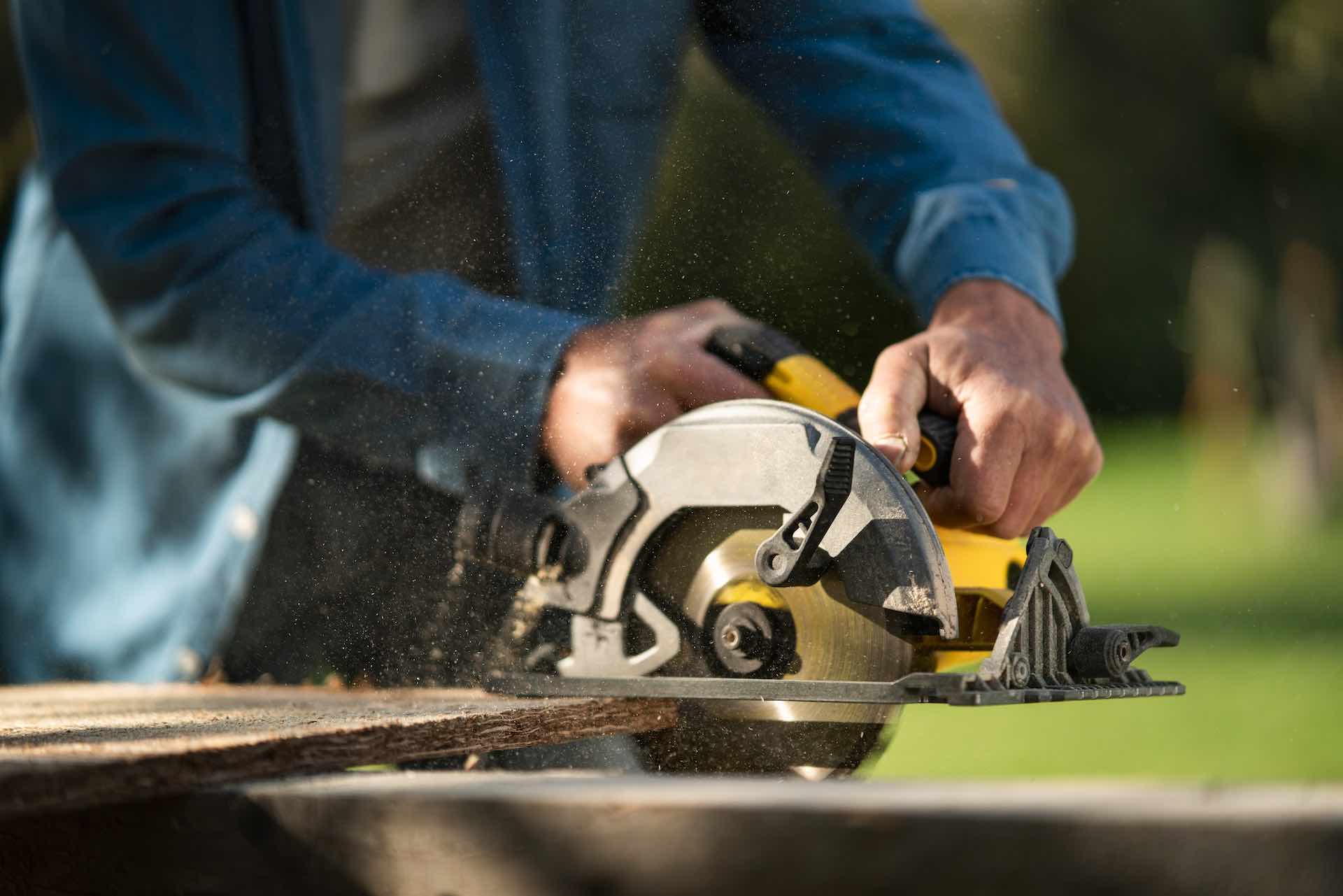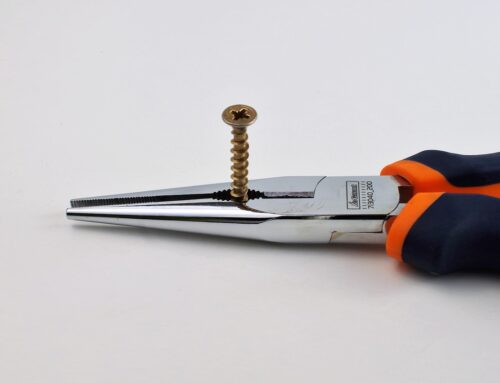
Cutting Corners: Which Saw Should You Use? Jigsaw vs Circular Saw
Cutting Corners: Which Saw Should You Use? Jigsaw vs Circular Saw
Jigsaw vs Circular saw, which should you buy? When it comes to cutting materials for your DIY or home improvement projects, a variety of tools can get the job done. Two popular options are the jigsaw and the circular saw. Jigsaws and circular saws can cut the same materials, and while both are capable tools, they have distinct differences that make them better suited for different tasks.
So which one is right for your needs? The jigsaw vs circular saw: if you’re wondering which saw you should use for your next project, keep reading!
Understanding the Basics: Jigsaw vs Circular Saw

Circular Saw vs Jigsaw
What are the differences between these two tools, and how do you decide which saw better fits your needs?
- The jigsaw is a versatile tool typically used to cut curves or where you want intricate designs and detailed work. Its narrow blade moves up and down rapidly to make precise cuts in various materials, such as wood, plastic, and even metal. Jigsaw blades vary greatly depending on the brand and their intended use. The jigsaw is known for its maneuverability and ability to cut intricate shapes and circular cuts. This makes it ideal for projects like cutting out holes in countertops for sinks or creating custom shapes for furniture. It is almost like a good hand saw that is powered.
- The circular saw, on the other hand, is a more straightforward tool. A circular saw’s primary use is for making straight cuts. It is a reciprocating saw (moves up and down in straight lines). It has a round, toothed cutting blade that spins rapidly to cut through materials like wood, plywood, and metal. Circular saws are great for getting through a large amount of lumber. Maybe you need to break down hardwood pieces to feed through a table saw. You could get a jigsaw to do this work, but it won’t come close in efficiency. The circular saw is perfect for projects like cutting straight boards or panels, trimming door frames, or making rough cuts in larger materials.
The Difference Between a Jigsaw vs Circular Saw is Important to Understand
So, what’s the main difference between using a jigsaw or a circular saw? Well, it mostly depends on the type of cuts you want to make. The jigsaw excels at making intricate, curved cuts, while the circular saw is best for straight cuts, bevel cuts, and rougher, more aggressive cutting tasks. Understanding this fundamental difference is crucial in deciding which tool to use for your project.
The jigsaw and circular saw are both valuable tools in any DIY enthusiast’s arsenal. The key to determining which one to use lies in the type of cut you need to make. If you’re working on a project that requires intricate, curved cuts, reach for the jigsaw. The circular saw is your best bet for straight cuts and rougher tasks. By understanding each tool’s basics and intended uses, you can make an informed decision and confidently tackle your projects.
Factors to Consider When Choosing Between a Jigsaw and a Circular Saw

Circular Saw
Choosing the right tool for your project can be daunting, especially when deciding between a circular saw and a jigsaw. To help you make an informed decision, here are some factors to consider when choosing between these two powerful cutting tools:
Type of Cut
- One crucial factor to consider is the type of cut you need to make. As mentioned earlier, jigsaws excel at making intricate, curved cuts. Get a circular saw first if you require faster and more accurate cutting. The jigsaw is your best bet if your project requires detailed work or cutting out shapes. On the other hand, if you need to make long, straight cuts or trim materials, the circular saw is better suited for this work. Understanding the type of cut you need will help you determine which tool best fits your specific project.
What Material Are You Cutting?
- Another factor to consider is the material you will be cutting. Both jigsaws and circular saws are versatile and can cut through a wide range of materials, such as wood, plastic, and even metal. Primarily, though, both the jigsaw and circular saw are made for cutting wood. However, it’s important to consider the thickness and hardness of the material. Jigsaws are typically better suited for thinner materials, as their narrow blades allow for more precision. For example, a jigsaw cannot handle cut beams and thick boards. Circular saws, on the other hand, are better equipped to handle thicker and more rigid materials due to their larger, toothed blades. Consider the material you will be working with and choose a tool that can handle the job.
What Experience Do You Have With Power Tools?
- It’s also important to consider your skill level and experience with each tool. While beginners can use jigsaws and circular saws, they require different techniques and handling. If you’re new to power tools, starting with a jigsaw might be a good idea. With their vertical blade, jigsaws are generally easier to control and maneuver, making them an excellent tool for beginners. However, if you have experience using power tools and are comfortable with their operation, we would then recommend the circular saw. Circular saws require a stable base and proper technique for accurate cuts. Only use the circular saw after familiarizing yourself with the appropriate usage before diving into your project.
Analyzing Cutting Capacities: When to Use a Circular Saw and When to Use a Jigsaw?

Jigsaw
When it comes to choosing the right, saw for your DIY or home improvement project, one of the most important factors to consider is the type of materials you’ll be cutting. Also, what type of project are you working on? Both jigsaws and circular saws have unique cutting capacities, and choosing your first power saw depends on these factors.
I use my jigsaw when the project has tight corners, or I need to make a plunge cut. The design of the jigsaw gives you the flexibility to create custom designs. A jigsaw can also cut out shapes, which can be very useful. A circular saw has one main advantage in the amount of material it can get through quickly. Whereas a jigsaw is generally better suited for thinner materials. A jigsaw may struggle to make clean and precise cuts when working with thicker or harder materials, such as thick hardwood or metal pipes.
The Jigsaw and Circular Saw are Often Bought Together
If you plan on getting a circular saw, be careful when controlling the saw. The reciprocating blade is primarily designed for making straight cuts in various materials. With its toothed saw blade spinning rapidly, the circular saw can effortlessly cut through wood, plywood, particleboard, and even some metals. We would recommend buying a circular saw when you are looking to cut straight boards, panels, or trimming door frames. This saw is going to make quick work of larger materials. However, due to the larger circular saw blade size, circular saws may not be as suitable for intricate or curved cuts as jigsaws.
If you’re working with thin or delicate materials that require intricate cuts, such as making wooden crafts or cutting out shapes from plywood, get a jigsaw when you need this type of cutting. If you’re tackling larger projects that involve straight cuts or rougher materials, such as building a deck or cutting through thick wooden boards, the circular saw is the type of tool to choose.
Each tool requires different handling and blade adjustment techniques, so take the time to read the manuals and practice using scrap materials before diving into your project.
In summary, jigsaws and circular saws have their own cutting capacities and are best suited for specific projects and materials.
Recommendations for Beginners: Which Saw to Start With, When to Buy a Circular Saw Over a Jigsaw

Circular Saw on ground
If you’re new to the world of power tools, choosing the right saw for your DIY projects can be overwhelming.
For beginners, I would recommend starting with a jigsaw first. Why? Well, the jigsaw is generally easier to control and maneuver, making it an excellent tool for those new to power tools. This type of saw is also more versatile in terms of the different cuts it can make. This saw is the better tool for intricate and curved cuts. So, if you’re interested in woodworking or crafts that require detailed work, the jigsaw allows this delicate work. A circular saw would be more challenging to use in these applications, even for a professional. A jigsaw is a more versatile tool than a circular saw.
Get The Right Jigsaw Blade
To get started with a jigsaw, there are a few things you need to know. First, ensure you have the right jigsaw blade for the material you’ll be cutting. There are different types of jigsaw blades for wood, plastic, and metal, so choose accordingly. Next, ensure that the blade is securely fastened and properly aligned with the base of the jigsaw. This will ensure clean and accurate cuts. Finally, keep a steady hand and follow your cutting line closely when cutting. Take your time and let the jigsaw do the work for you when you cut with a jigsaw.
On the other hand, if you have some experience with power tools or feel confident in your abilities, you may want to consider starting with a circular saw. If you cut with a circular saw, make sure you have a stable base, a steady hand, and proper blade depth adjustment for clean, accurate cuts that go in a straight line.
To use a circular saw, start by setting the blade depth to the appropriate level for your material. Next, position the saw on the material with the blade guard raised. Hold the saw firmly with both hands and make sure the base plate is flush against the material. Finally, start the saw and guide the saw along your cutting line, keeping a steady pace and maintaining control of the saw at all times. A circular saw vs a jigsaw is not even a competition when large amounts of wood need to be cut. A circular saw is one impressive piece of kit.
Do You Buy a Cordless Saw or a Corded Saw?

Measuring Lumber
When considering a purchase of a jigsaw or circular saw, most of us would have bought a corded saw in the past. With the stunning advancement in battery technology, this decision is now more complicated.
The absence of a cord following you around is that it allows the liberty to move with unparalleled flexibility. This adds convenience, enjoyment, and accuracy to every project. However, it’s worth noting that certain cordless jigsaws, while convenient, may not match the sheer power of corded counterparts, especially when dealing with tougher materials or extended usage. With the advancement in battery technology, this gap is getting smaller every year. Most reviews of good jig and circular cordless saws these days are very positive.
Cordless circular saws are almost a no-brainer. Cordless circular saws come with such impressive reviews. Look for a comparison on cordless circular saws before you buy.
Lastly, when considering either a jigsaw or a circular saw, both of them need a stable and multi-functional base. Ensure you have a good multifunction table. Modern, well-made, and versatile multifunction tables ensure safe and accurate saw cuts. A multifunction table displays graphical measurements on the table and has the ability to accommodate other tools in the future. Many of these tables can accommodate a circular saw, a table saw, or miter saw, a jigsaw, and even circular saw guides. Even routers can be accommodated, and the right table can be set up for specific depth cuts, angle cuts, and bevel cuts.
Concluding Thoughts:

Now that we’ve explored the differences between jigsaws and circular saws and discussed the factors to consider when choosing between them, it’s time to make a decision about which saw best suits you.
If you’re a beginner and looking to dip your toes into the world of power tools, I recommend starting with a jigsaw. Its versatility and ease of use make it a great tool for beginners. Remember to choose the right blade for the material you’ll be cutting and follow the proper techniques for using a jigsaw.
On the other hand, if you have some experience with power tools or feel confident in your abilities, a circular saw might be the right choice for you. Circular saws are more powerful and better suited for making long, straight cuts or working with larger materials. A track saw may be the ultimate for straight cuts but the circular saw is so versatile.
Finally, always prioritize safety when using power tools. Even a hand saw can be dangerous. These power tools can do some serious damage if safety protocols and common sense are not applied.
Familiarize yourself with the user manuals, wear appropriate safety gear, and take your time to ensure clean and accurate cuts. With the right techniques and precautions, both the jigsaw and circular saw can be valuable tools in your DIY arsenal.





